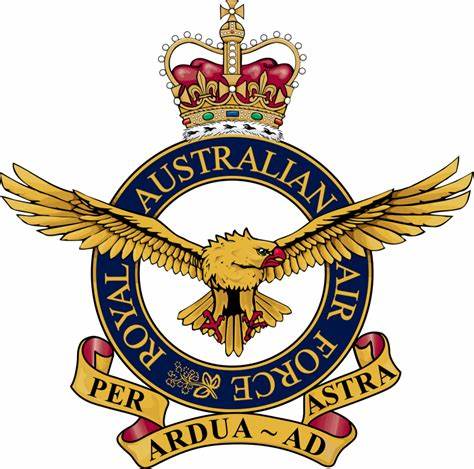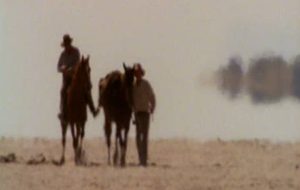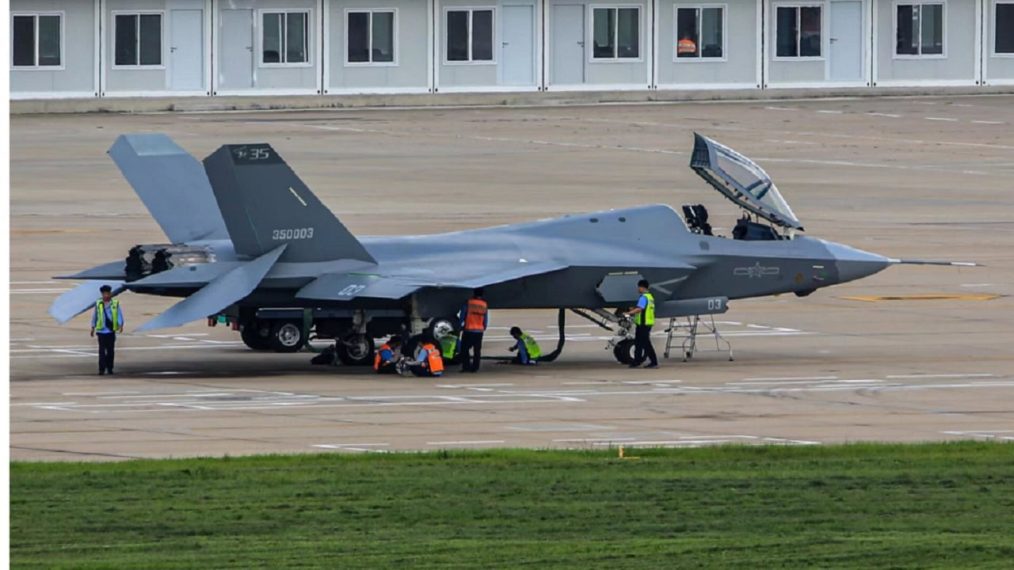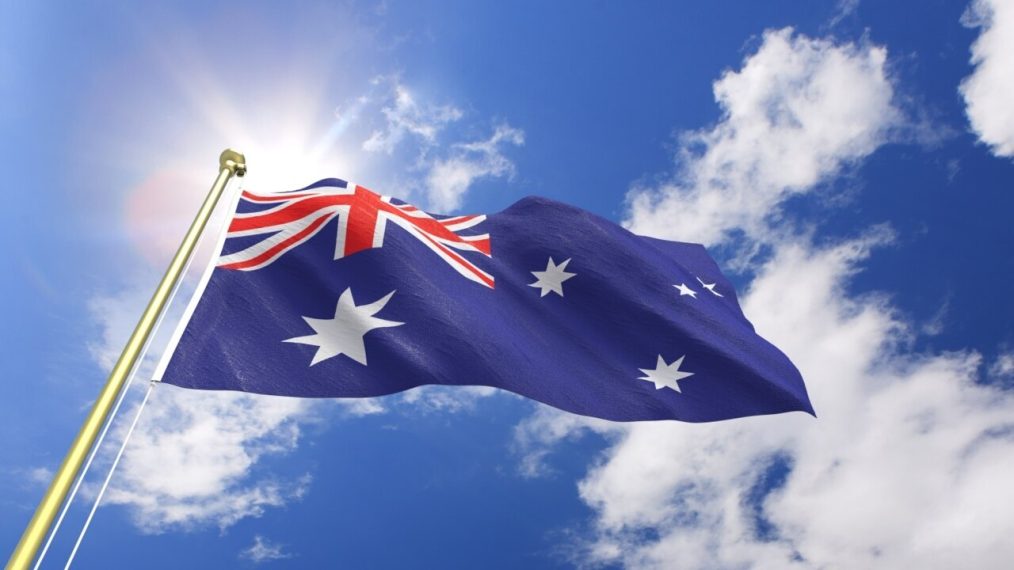As 2024 comes to a close, we’re reflecting on the incredible achievements of the Royal Australian Air Force. From supporting our Pacific neighbours to working with international partners and responding to crises at home, our people have been there when it mattered most. Watch our 2024 Year in Review and see how Air Force has made a difference this year.
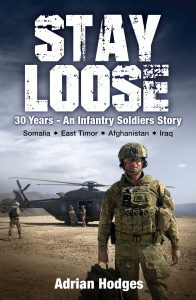 “Your past doesn’t define you—it teaches you. Every experience is a lesson, not a life sentence.”
“Your past doesn’t define you—it teaches you. Every experience is a lesson, not a life sentence.”
In Stay Loose, Adrian Hodges delivers a candid reflection on three decades of service in the Australian Army, from navigating the dangers of war to the challenges beyond the battlefield.
Adrian chronicles both the highs and lows. From his battalion’s deployment to Somalia’s famine-stricken chaos—Australia’s first major overseas operation since the Vietnam War—to participating in the nation’s first lethal firefight in decades, he offers harrowing frontline insights. His memoir covers a military exchange in Malaysia, as well as service in Afghanistan and Iraq, providing an intimate view of the physical and psychological tolls faced by soldiers.
But this memoir isn’t just about combat. Adrian reflects on his struggles after leaving the Army, battling uncertainty and searching for direction. His post-military career led him to work as a court recorder on several high-profile legal cases, including the investigation into the Black Hawk helicopter crash that claimed 18 military lives. He also recounts backpacking through North Africa and the Middle East, contrasting his military service with personal discovery.
Eventually re-enlisting, Adrian’s return to operations and military exchanges weaves themes of brotherhood, resilience, and the strength found in family. Now a private military contractor in the UAE, he explores how his past shaped his future.
Stay Loose is a deeply personal journey of finding humour and catharsis in extraordinary circumstances, proving that past experiences offer lessons, not life sentences.
About the Author – Adrian Hodges
Adrian Hodges was born in 1970 and has been involved in the defence industry for more than thirty-five years. His first military mission was to war-ravaged Somalia, on the Horn of Africa, with his last to Iraq. An Australian by birth, Adrian is now based in the Middle East, where he works as a military contractor for the Presidential Guard, an elite military unit of the United Arab Emirates Armed Forces.
LIST PRICE: AU$ 34.99 / NZ$ 39.99
PRICE MAY VARY BY RETAILER
- Publisher : Big Sky Publishing (2 April 2025)
- Language : English
- Paperback : 312 pages
- ISBN-10 : 1923300180
- ISBN-13 : 978-1923300187
Available from: Amazon.com.au – booktopia – Dymocks – Mightyape – The Nile – QBD books
ED: The following video was sent to me by Bob Buick, with the following quote with which I agree; “Me being me, a pragmatist, of the commonsense group I cannot discover evidence of “CLIMATE CHANGE” but can of “GLOBAL WARMING” that is not CO2 cause but plant evolution that will continue until the demise of EARTH!”
———-
Liberty Energy CEO Wright is an MIT and Berkeley trained engineer running a big fracking company. He’s also an investor in next-gen technology, including Tim Latimer’s Fervo Energy, which aims to frack hot rocks to provide geothermal energy. To make the world a better place, you need more reliable, affordable, secure, energy,” Chris Wright, CEO of Liberty Energy, told Forbes, 10 days before President-elect Donald Trump announced he would nominate him as the next secretary of the U.S. Department of Energy. And that’s true, he says, even if the world has to rely on fossil fuels to get there.
The Independent
In a decisive response to escalating threats in the Middle East, US Central Command (Centcom) launched airstrikes targeting Houthi-controlled facilities in Yemen on Tuesday. The strikes, which spanned coastal Yemen and the capital, Sanaa, focused on a command node and facilities used for manufacturing and storing weapons. According to a Centcom statement, radar positions and one-way aerial drones were also destroyed in operations that included additional strikes on Monday.
The offensive marks a significant development in a year-long US-led campaign aimed at curbing attacks by the Iranian-backed Houthis on commercial and military vessels in regional waters. These ongoing assaults have disrupted global shipping and strained US allies whose economies depend heavily on maritime revenue.
A Year of Rising Hostilities
The Houthis, who have controlled much of Yemen for over a decade, have amplified their maritime campaign in recent months. Their operations, initially framed as resistance to Israel’s military actions in Gaza, have since expanded into direct attacks on Israeli targets. While many of these strikes were intercepted, some reached civilian areas, sending millions of Israelis to bomb shelters and prompting a strong retaliatory stance from the government of Prime Minister Benjamin Netanyahu.
The American airstrikes align with a broader strategy to counter the Houthis’ influence. Israel, a key US ally, has concurrently launched its own aerial operations against Houthi positions following missile and drone attacks that threaten its security. Both nations aim to diminish the Houthis’ ability to project power beyond Yemen’s borders.
Regional Implications
The Houthis’ rise to prominence has altered the dynamics of Middle Eastern geopolitics. Once an obscure rebel faction from Yemen’s northern mountains, the group now positions itself as a leading force in an international resistance movement against the West. This narrative has gained traction as Iranian-backed groups like Hezbollah in Lebanon and Hamas in Gaza face increasing setbacks due to Israeli military campaigns.
Experts note that while a year of US, British, and Israeli strikes has degraded the Houthis’ military capabilities, their resolve remains unshaken. The group’s ability to adapt and persist has bolstered its regional standing, particularly among populations sympathetic to its anti-Western rhetoric.
US-Israel Coordination
The Biden administration’s decision to intensify airstrikes underscores the growing urgency of stabilizing the region. Military analysts believe that the coordinated US-Israel campaign could mitigate the Houthis’ capacity for external aggression. However, the operations also risk exacerbating Yemen’s humanitarian crisis, with millions already facing famine and displacement due to the ongoing civil war.
In Washington, officials emphasize that these actions are necessary to protect global shipping lanes and support allies in the region. “Our commitment to maintaining freedom of navigation and regional stability is unwavering,” a Pentagon spokesperson stated.
As the conflict escalates, the interplay between military action and diplomacy will likely shape the next chapter of this complex geopolitical saga. With tensions high and the stakes even higher, the international community watches closely, hoping for a resolution that brings lasting peace to the region.
The Krakow Post
Ukraine’s Security Service (SBU) and Special Operations Forces (SSO) have conducted extensive drone strikes targeting critical Russian facilities, causing significant damage, fires, and disruptions. The strikes, which demonstrate the increasing capabilities of Ukraine’s unmanned aerial systems, focused on the Ryazan oil refinery and Bryansk’s Kremniy plant, both integral to Russia’s military operations.
The Ryazan oil refinery, a major supplier of fuel for Russia’s military, faced a devastating assault.
- The refinery, which processes 17 million tons of oil annually, saw fires erupt in at least three storage tanks.
- The flames quickly spread to the workshop housing the hydrotreating unit used to produce diesel fuel and aviation kerosene.
- Local residents reported hearing over 50 explosions, with footage of the massive blaze circulating on social media.
The attack has likely disrupted the production of critical fuels needed for Russian military vehicles and aircraft, further straining logistics in the ongoing conflict.
The Kremniy plant in Bryansk, a facility essential to Russia’s missile production, was another key target.
- The plant manufactures microelectronics for systems including Topol-M missile complexes, Bulava ballistic missiles, and S-300/S-400 anti-aircraft systems.
- Videos captured the plant engulfed in flames, with thick smoke billowing into the sky.
- Reports indicate that significant damage to the facility will impact Russia’s ability to maintain and deploy advanced weaponry.
The strikes extended beyond Ryazan and Bryansk, with UAV activity reported in Moscow and Saratov regions.
- Moscow Mayor Sergei Sobyanin confirmed that air defences intercepted multiple drones, preventing further damage in the capital.
- In Saratov, residents reported hearing approximately seven explosions, indicating an active response from Russian air defences.
In response to the strikes, Russia activated the “Carpet” plan, halting operations at several airports.
- Domodedovo and Zhukovsky international airports in Moscow temporarily suspended flights.
- Airports in Kazan, Samara, Penza, Saratov, and Nizhnekamsk also faced significant operational restrictions.
The disruptions underscore the growing reach of Ukraine’s drone capabilities, as the attacks forced Russia to redirect resources to protect critical infrastructure.
These strikes mark a significant escalation in Ukraine’s ability to target Russia’s war machine deep within its territory. By hitting facilities vital to fuel production and missile manufacturing, Ukraine aims to weaken Russia’s operational capacity on the battlefield.
As Russia grapples with the aftermath, the strikes signal a shift in the conflict, with drones playing a pivotal role in altering the strategic landscape.
Kyiv Independent
On Friday evening, December 27, Ukrainian President Volodymyr Zelensky revealed in his daily address that several North Korean soldiers captured in Ukraine had succumbed to their injuries. Zelensky criticized the Russian government for providing these troops with “minimal protection,” highlighting the grim realities of their deployment.
“Our soldiers managed to capture them,” Zelensky stated. “But they were very seriously wounded and could not be saved.” He went on to condemn what he described as “the madness of which dictatorships are capable,” referencing the decision to send soldiers to die “in battles in Europe.”
North Korean Troops in Kursk
According to Ukrainian intelligence, approximately 12,000 North Korean troops, including around 500 officers and three generals, have been stationed in Russia’s Kursk region. This development has raised serious concerns about the escalating internationalisation of the conflict in Ukraine, as well as the treatment and role of foreign soldiers sent to support Russia’s war efforts.
U.S. Response: “Expendable Troops”
The White House has also weighed in on the situation. John Kirby, spokesperson for the National Security Council, commented on reports of North Korean troop casualties, noting that more than a thousand North Korean soldiers had died in “hopeless” assaults in the Kursk region. Kirby condemned the apparent disregard for these soldiers’ lives, asserting that “Russian and North Korean military leaders viewed them as expendable troops.”
The U.S. government has characterized this deployment as a further indicator of the growing desperation and moral bankruptcy of the Kremlin’s strategy in Ukraine. Kirby’s remarks underscore the international community’s concern about Russia’s increasing reliance on foreign manpower, particularly from nations like North Korea that are already under heavy scrutiny for human rights violations.
Geopolitical Implications
The revelation of North Korean involvement in the conflict adds a troubling layer to the ongoing war in Ukraine. Analysts suggest that Pyongyang’s decision to send troops may be tied to a deeper strategic alliance with Moscow, potentially involving arms deals or economic support. Meanwhile, the deployment of North Korean soldiers raises ethical and humanitarian questions, particularly given their apparent use as “cannon fodder” in high-risk operations.
Global Reaction
The involvement of North Korean troops has sparked widespread condemnation from Western nations and human rights organizations. Observers fear that the participation of these soldiers will further complicate efforts to achieve a peaceful resolution to the conflict. The incident also highlights the broader consequences of authoritarian regimes collaborating in conflicts beyond their borders.
As the war in Ukraine drags on, the deployment of foreign troops—and their subsequent treatment—serves as a stark reminder of the human cost of geopolitical ambitions. The deaths of these North Korean soldiers, unprotected and used in perilous missions, underscore the lengths to which some regimes will go to achieve their objectives. For Ukraine and its allies, the challenge now lies in addressing these developments while continuing to defend against aggression.
ED: Be sure to click on the link within this document and read the newspaper articles of the day.
Not 2010, BUT 1828 at a blistering 53.9 °C
Back before man-made climate change was frying Australia, when CO2 was around 300ppm, the continent savoured an ideal pre-industrial climate……. RIGHT?
This is the kind of climate we are spending $10bn per annum to get back too…. Right again?
We are told today’s climate has more records and more extremes than times gone by, but the few records we have from the early 1800’s are eye-popping.
Things were not just hotter, but so wildly hot it burst thermometers.
The earliest temperature records we have show that Australia was a land of shocking heatwaves and droughts, except for when it was bitterly cold or raging in flood.
In other words, nothing has changed, except possibly things might not be quite so hot now!
Silliggy (Lance Pidgeon) has been researching records from early explorers and from newspapers.
What he’s uncovered is fascinating! It’s as if history is being erased!
For all that we hear about recent record-breaking climate extremes, records that are equally extreme, and sometimes even more so, are ignored.
In January 1896 a savage blast “like a furnace” stretched across Australia from east to west and lasted for weeks.
The death toll reached 437 people in the eastern states.
Newspaper reports showed that in Bourke the heat approached 120°F (48.9°C) on three days.
Links to documentary evidence (1)(2)(3)
The maximum at or above 102 degrees F (38.9°C) for 24 days straight!
Use the several links below to read the news reports at the time for yourself ……
- By Tuesday Jan 14, people were reported falling dead in the streets.
- Unable to sleep, people in Brewarrina walked the streets at night for hours, thermometers recorded109F at midnight.
- Overnight, the temperature did not fall below 103°F.
- On Jan 18 in Wilcannia, five deaths were recorded in one day, the hospitals were overcrowded and reports said that “more deaths are hourly expected”.
- By January 24, in Bourke, many businesses had shut down (almost everything bar the hotels).
- Panic stricken Australians were fleeing to the hills in climate refugee trains.
As reported at the time, the government felt the situation was so serious that to save lives and ease the suffering of its citizens they added cheaper train services:
What I found most interesting about this was the skill, dedication and length of meteorological data taken in the 1800′s. When our climate is “the most important moral challenge” why is it there is so little interest in our longest and oldest data?
Who knew that one of the most meticulous and detailed temperature records in the world from the 1800′s comes from Adelaide, largely thanks to Sir Charles Todd.
The West Terrace site in Adelaide was one of the best in the world at the time and provides accurate historic temperatures from “Australia’s first permanent weather bureau at Adelaide in 1856″.
Rainfall records even appear to go as far back as 1839. Lance Pidgeon went delving into the National Archives and was surprised at what he found.
The media are in overdrive, making out that “the extreme heat is the new normal” in Australia.
The Great Australian Heatwave of January 2013 didn’t push the mercury above 50C at any weather station in Australia, yet it’s been 50C (122F) and hotter in many inland towns across Australia over the past century.
See how many are in the late 1800′s and early to mid 1900′s.
You can’t blame those high records on man-made global warming!
The Straits Times
The United States maintains air superiority with its two operational fifth-generation stealth fighters, the F-22 Raptor and F-35 Lightning II. China, however, is determined to match that prowess. The People’s Liberation Army Air Force (PLAAF) is advancing its stealth capabilities with the J-35 and J-20 fifth-generation fighters, both designed to evade radar and challenge U.S. dominance.
A Public Debut for the J-35
The J-35 recently captured global attention with its first public display at the Zhuhai Air Show. During a five-minute flight demonstration, the aircraft impressed observers with its agility and speed. These qualities highlight China’s ambition to produce a fighter capable of rivalling the F-35 and even the F-22.
Attendees also examined a J-35 mock-up up close, fuelling speculation that the aircraft could provide the PLAAF with parity or superiority in aerial combat within the Indo-Pacific region. Military analysts see the J-35 as a testament to China’s commitment to modernizing its air force and countering Western dominance.
Carl Schuster, a military analyst and former director of operations at the U.S. Pacific Command’s joint intelligence centre, remarked, “The message [from China’s military] is that they are equal to the U.S. and the rest of the West. U.S. forces have enjoyed air supremacy in every post-World War II conflict. China’s growing air power challenges that now-traditional Western advantage.”
Similarities to the F-35
Critics note that the J-35’s design bears a striking resemblance to the F-35 Lightning II, raising suspicions of cyber-espionage. Past Chinese cyber operations allegedly targeted sensitive data on the F-35, which may have informed the development of the J-35’s avionics and other systems. This resemblance underscores concerns about intellectual property theft in the defence sector.
J-35 Specifications
The J-35 is a medium-sized stealth fighter equipped with features standard to fifth-generation aircraft. These include a twin-engine layout, twin divert-less supersonic intakes, and a single ventral internal weapons bay. Its stealth attributes—such as edge alignment, serrated panelling, smooth external surfaces, and radar-absorbing materials—reflect state-of-the-art design principles.
The aircraft is expected to use the WS-19 engine, a new powerplant distinct from the WS-15 engines of the J-20 Mighty Dragon. The WS-19 promises super cruise capability, thrust vectoring, and speeds exceeding Mach 2. Additionally, the J-35 features an electro-optic/infrared sensor and a wide-angle holographic heads-up display in its cockpit.
Implications for Naval Warfare
The J-35 and J-20 are anticipated to carry advanced weaponry, potentially including anti-ship and air-to-surface capabilities. These features could pose a significant threat to U.S. Navy carrier strike groups. While developing two stealth fighters simultaneously may strain resources and inflate costs, the PLAAF appears committed to maintaining production momentum for both aircraft.
Aerial Combat Prospects
Though the J-35 may not achieve the same level of stealth as the F-35 or F-22, it could still excel in specific scenarios. For instance, it may outperform Taiwanese fighters and older fourth-generation jets like the PLAAF’s J-10 Vigorous Dragon. The real test will be its performance in combat against the world’s premier fifth-generation aircraft.
China’s dual stealth fighter initiative signals its determination to challenge U.S. air supremacy. As the J-35 edges closer to operational deployment, the balance of power in the Indo-Pacific could shift, raising new questions about the future of aerial warfare.
Look at the range of events and support provided to Aboriginal people every year in this country. Yet, when we suggest celebrating one day as a united Australia, we’re accused of being racist and offensive to their culture.
- Funding for Indigenous Communities: The Australian taxpayer contributes over $30 billion annually to Indigenous programs and initiatives. According to the 2021 census, the Indigenous population represents 8% (983,700 people) of the country’s total population, which includes a substantial number of affluent, urban Aboriginal Australians. This is a significant investment, yet we are made to feel guilty for simply wanting a National Day of Unity.
- Rewriting History: I am tired of the constant rhetoric claiming we “invaded” this country. Historical perspectives are complex, but to continually frame our shared history in these terms creates division, not reconciliation.
- Shared Ownership: Politicians and the media often state, “This is their country,” as if the other 96% of Australians don’t also have a right to call this place home. What would Australia be without the millions of people from diverse backgrounds who have contributed to building it into the nation it is today?
- Early Settlers Ignored: I am offended by the lack of recognition for the early settlers who worked tirelessly to establish infrastructure and develop this country. Their contributions have provided the foundation for the quality of life enjoyed by everyone living here today.
- Welcome to Country Ceremonies: While acknowledging culture is important, I am frustrated by the frequency and cost of Welcome to Country ceremonies, which are often taxpayer-funded. This is our shared country—we shouldn’t feel the need to be “welcomed” to it constantly.
- ANZAC Day: It is especially concerning that Welcome to Country has been integrated into ANZAC Day ceremonies. This day should remain focused on honouring all Australians who served and sacrificed for our freedoms.
- Policing and Accountability: Across Australia, police are placed in a difficult position, often vilified by media and politicians when dealing with Aboriginal offenders, regardless of the circumstances.
- Celebrations and Cultural Events: We celebrate Halloween, Chinese New Year, and many other cultural events without controversy. Yet, Australia Day is under attack from left-wing politicians, the media, and woke activists. It’s disheartening to see emotional blackmail being used to pressure Australians into abandoning this important day of national pride and unity.
If this continues, the next steps may include changing the Australian flag or even renaming the country with an Aboriginal name. We must stand firm to preserve our national identity and shared heritage.
Dear Frontline members,
As we welcome the first day of the New Year, Julie and I want to extend our warmest wishes to each one of you. May 2025 bring you good health, happiness, and countless opportunities to enjoy every day.
We truly appreciate all the support you give Frontline, to help maintain my dedication, and passion. You are the heart and soul of Frontline, and we’re grateful to have such a wonderful following.
Here’s to a year filled with exciting adventures, cherished memories, and shared success. Let’s make 2025 a remarkable year together!
With our warmest regards,
Ray and Julie

